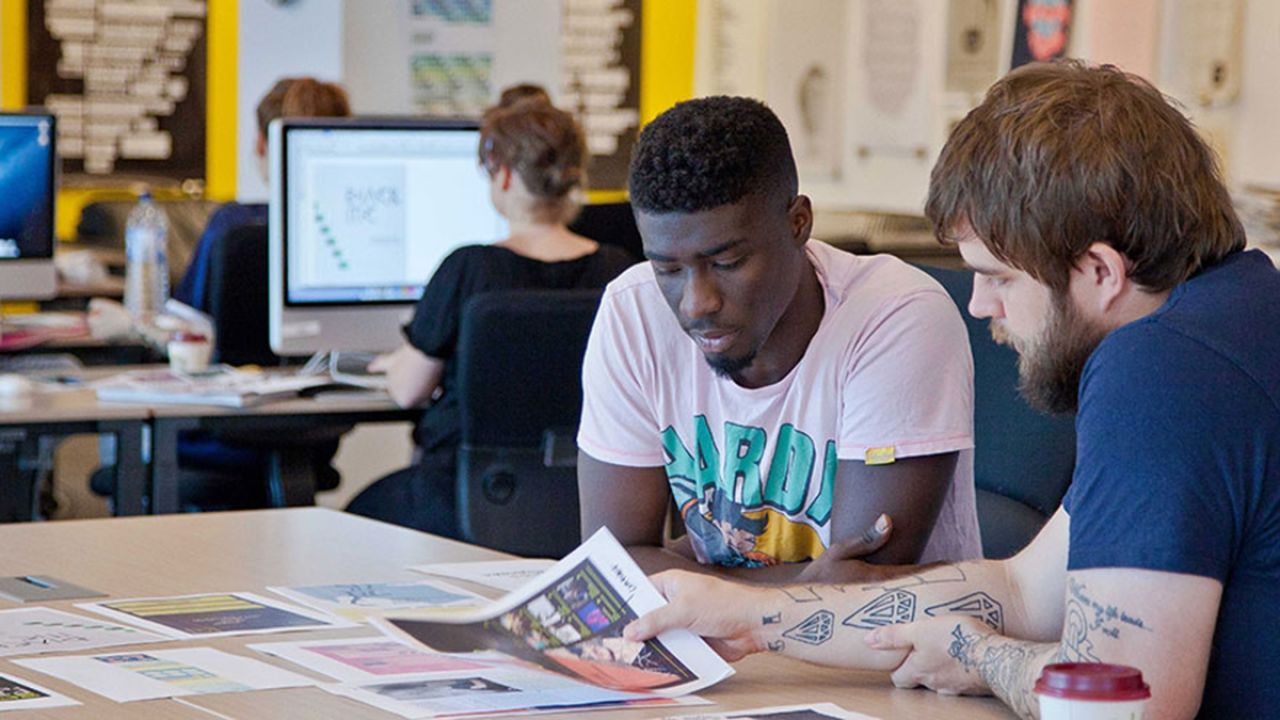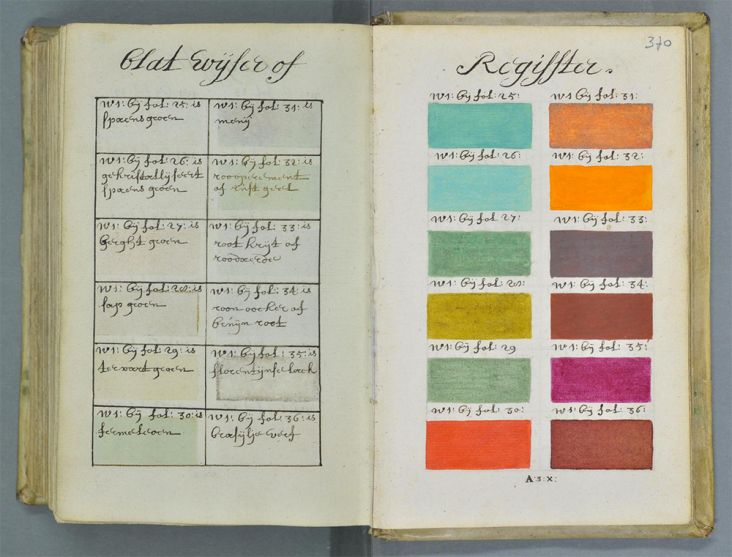How to #DoWhatYouLove and become a graphic designer
Did you go to university and take the wrong course, wishing instead you’d followed your passion for art and design?

Image courtesy of Shillington
Have you since been stuck in a tedious 9-to-5 job where creativity always passes you by? If you’ve always had dreams of becoming a graphic designer, then it’s time to break free and do what you love.
Creative Boom has teamed up with Shillington College – a graphic design course provider with campuses in the UK, US and Australia – to provide a helpful step-by-step guide on how to turn that hobby into a job.
And to get your new career underway, Shillington College is offering an fantastic Creative Starter Kit worth £1,000 to help you #DoWhatYouLove, including an iPad Mini 3, Wacom tablet, Bose headphones, and much more – to one lucky winner. To enter, fill out the #DoWhatYouLove survey before the closing date at midnight on 31 July 2015.
In the meantime, kick-start your graphic design career and carve a job you love with these handy tips.
1. Get the relevant qualifications
If you’ve already got your graphic design qualification, skip this step and read on. For those that haven’t yet ventured into further education, there are plenty of reputable courses and colleges that can help grow your skills.
It’s worth figuring out what’s possible to suit your lifestyle so that you can choose the right course. For instance, will you be able to enrol on a full-time course or will you need to fit a part-time course around your current career?
Plenty of colleges offer flexibility. If you already know the basics or are desperate to get started today, Shillington offers a fast-track 3-month course, providing thorough guidance and training across a variety of design mediums.
Indeed, the hands-on-experience of a design course will give you insight into a career as a graphic designer, and make it much easier to open doors afterwards. What’s more, you’ll graduate with plenty of new work added to your portfolio so potential employees can see your wealth of experience.
2. Consider your options
Design is all around us with many different avenues you could pursue. It’s always good to experiment with various mediums, but hone in on your strengths to get the most out of a future design career.
Just some of the disciplines you could specialise in are typography, branding, web design or motion graphics. Then all you have to do is decide where you want to work. Will it be with a design studio? Or will you join a more substantial marketing agency with its design team? Will you work in-house, helping to create graphics for a brand or organisation?
Prospects has a useful breakdown of where your graphic design degree can take you, picking out the essential technical and transferable skills you will acquire from a design course, and the likely job roles you will encounter.
3. Gather inspiration from the design world
If you want to turn that dream into a reality, it’s time to start living and breathing design. Fill your day-to-day with design inspiration by signing up to newsletters and following relevant social accounts.
There has never been a better time to enter into a creative field due to the powers of social sharing. The Internet is the perfect go-to place for gathering all the latest news, projects and upcoming names from the design world. Immerse yourself, and it will soon pay off. Check out Design Inspiration, The Inspiration Grid and our suggestions of 100 fresh blogs and websites for creative professionals.
But don’t just tune into the online world. Be observant and keep your eyes open to design all around you. From TV adverts to billboard posters, there’s no limit to where creativity can spark. Understand the differences between advertisements in newspapers, magazines and websites, for example, to give you a better springboard for your career.
4. Download the relevant software
No graphic designer would be without specific software. They may be pricey, but the packages in Adobe Creative Cloud are your new best friends. Many designers tend to have their preferences between Photoshop and Illustrator, for example, but it is up to you to find the platform you are most comfortable using. Both packages have their highlights and setbacks depending on what you use them for.
A design degree or course will introduce you more to these packages; making it the perfect time to find what works best for you to achieve the quickest and strongest results.
If you need an extra helping hand, head to YouTube or design-specific websites, like Digital Tutors and Digital Arts Online, for in-depth video and article tutorials. There’s also an unlimited amount of software reviews and comparisons from fellow designers, to help you choose the most suitable option.
5. Bring your CV up to scratch
Some people forget that you still need a CV even if you have a portfolio. Just like any other career, employers will want to know more about you. It doesn’t matter if this is your first career either. Bring together all of your previous experiences, and get it all successfully onto paper.
No one likes writing CVs. There’s often more pressure to stand out from the crowd within the creative industries, but there are some basic rules to lockdown. Before you worry over formatting, pay particular attention to what you write, highlighting your strengths and asking yourself what can I bring to the company?.
6. Collate a traditional portfolio
A strong CV is imperative but don’t forget to prepare a traditional portfolio as well. This is often essential for job interviews as employers like having a physical body of work to flick through.
Less is more when it comes to a printed portfolio. Collate all of your best work and don’t go too overboard on the information. You’ll be expected to talk through some of your pieces anyway so that you can fill in any gaps during the interview. Just make sure you practice pitching yourself; you want to appear confident, passionate and creative when you’re talking through your work.
Creating a printed portfolio can be a lengthy process, but investing time in it will lead to better career success. Printed portfolios are never 100% finished either; you should always be improving and updating it.
7. Create an online portfolio
Many potential employers will also expect to see a comprehensive online portfolio that shows off all of your best work. A great place to start is by becoming part of an online design community or directory: Behance, Dribbble and Cargo Collective all offer free online portfolio solutions.
Or you could invest a little money into creating something that is separate from these communities and looks like your website. Squarespace is just one of the easy website-building tools out there that provide professional-looking portfolios which take away all the hassle and don’t dig too deeply into your pocket. It is highly recommended.
8. Get some work experience or an internship
If your traditional portfolio, online portfolio and CV are looking a bit thin, search for work experience opportunities or internships with design agencies. This will give you hands-on experience and offer you an insight into the office dynamic.
With some luck and a lot of commitment, you’ll be able to get your foot in the door and land a full-time job. This isn’t always the case though. See work experience or an internship as a chance to build upon your skills, start growing your network, and understand what life as a graphic designer is like.
9. Start searching for jobs
Once you’ve sorted your qualifications, considered your career options, gathered lots of inspiration, completed your portfolio and crafted a winning CV – it’s time to start looking for jobs.
Start by searching all the relevant jobs boards – The Drum, Design Jobs Board, If You Could and Design Week are just a few to get you going.
Don’t be afraid to approach design agencies directly though. It will set you apart from a pool of hundreds of other job-hungry people. A simple search on Google will bring up a ton of graphic design companies in your area. Even if they aren’t advertising vacancies, send your CV and a digital portfolio anyway. It may lead to something.
10. Prepare for an interview
Job interviews bring fear into even the most confident of people. When you’re competing against others for a limited amount of jobs, it can be daunting. From the moment you enter the interview you’ll need to impress.
Preparation is key. Make sure you read your CV inside out, so you are ready for their questions. Mistakes and little lies never go unnoticed. Research the company too. Who are their clients? What work have they produced? Where would you fit?
Think about what the interviewer might ask you and consider your answers. Tell me about yourself and Why do you want to work for us? are two common questions that make people slip up. You may be a fabulous designer, but you’ll need to prove you’re just as wonderful in person too, so sell yourself with an enthusiastic and positive attitude.
Things don’t just stop with an interview. Employers will appreciate it when you send a follow-up email. Thank them for the opportunity and explain that you look forward to hearing from them. Even if you don’t get the job, ask if the company could keep your details on file in case something else comes up. This is a valuable lesson in networking and can pay off in future.
And most importantly, don’t be too disheartened by rejections. Every job interview is a lesson. And it will bring you one step closer to your perfect job.
Don't forget the prize giveaway courtesy of Shillington College – a Creative Starter Kit worth £1,000 to help you #DoWhatYouLove, including an iPad Mini 3, Wacom tablet, Bose headphones, and much more – to one lucky winner. To enter, fill out the #DoWhatYouLove survey before the closing date at midnight on 31 July 2015. And watch the video below to get an idea of what it's like to study at Shillington.


























